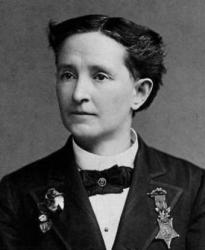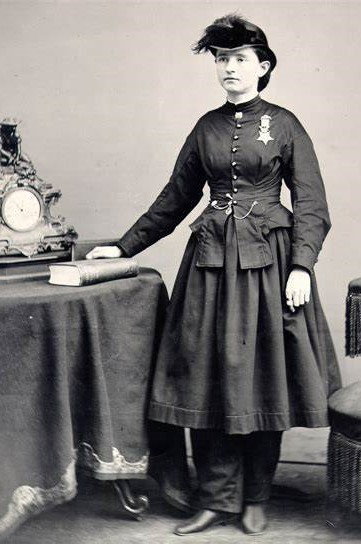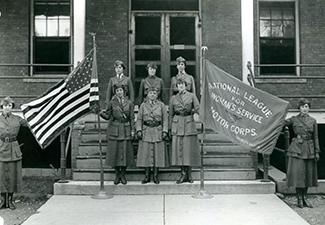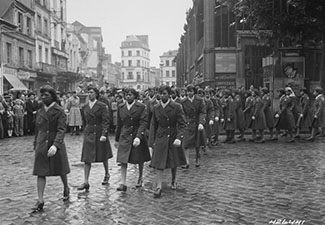Dr. Mary E. Walker: The Sole Female Medal of Honor Recipient

Let’s travel back to 1861, the beginning of the Civil War, where Dr. Mary Edwards Walker made groundbreaking contributions to medicine and earned the prestigious Medal of Honor award.
Dr. Mary Walker remains the only female to receive the award among over 3,500 Medal of Honor recipients. Although her medal was initially rescinded before her death, it was eventually reinstated. Before delving into the details, let’s explore her incredible legacy in American history.
| Details | Career Highlights |
| Branch: U.S. Army |
|
| Rank: Surgeon |
|
| War: Civil War |
|
| Medal of Honor Award Date: November 1865 |
|
| Born: Nov. 26, 1832 (Oswego, New York) |
|
| Died: Feb. 21, 1919 (Oswego, New York) |
|
The Early Years
Born in Oswego, New York, Walker grew up in a progressive household with parents who encouraged independence, education, and justice, especially for women’s rights.
Embracing her upbringing, Walker became determined at a young age to defy traditional feminine standards on the principle of injustice. From her clothes to her work, Walker often encountered criticism because she was everything a 19th-century woman was not.
Never wavering, Walker saved enough money to pay her way through college, and in 1855, she graduated with honors from Syracuse Medical College – the only female medical doctor in her class.
Walker joined private practices for a few years before the Civil War broke out in 1861. Eager to join the war and serve as a surgeon for the Army, she traveled to Washington, DC, where she met disapproval simply because she was a woman. To no surprise, Walker did not take no for an answer.
Her Fight Against Adversity
Instead of packing her bags and returning home, she traveled from hospital to hospital to volunteer her services. She was offered a nurse role but declined, knowing she had the credentials to be a surgeon. So instead, she asked to volunteer for the Union Army.
The Army had no female surgeons at the time, and, at first, she was only allowed to practice as a nurse. All she asked for in lieu of money was a place to sleep.
She served in numerous battles, tending to the severely wounded in makeshift hospitals. This included her service in the First Battle of Bull Run in 1861, the war’s first major battle.
Later, she worked unpaid at the Patent Office Hospital in Washington, DC and near the Union front lines, including the Battle of Fredericksburg.
In 1863, Walker was appointed the first female surgeon of the U.S. Army and worked as a contract surgeon with the 52nd Ohio Infantry. Here, Walker frequently crossed battle lines into enemy territory to treat civilians who hadn’t received medical care in a long time. This act alone put her at great risk, especially because Walker would often be alone. She would use this alone time to listen for information on troop movements and bring the intel back to her commanding officer.
In April 1864, Walker was captured by Confederate troops and arrested for spying, although she never admitted to it. She spent the next four months in several female military prisons as a prisoner of war. Unfortunately, her health declined severely while in prison, ultimately damaging her lungs and eyes so badly that she couldn’t practice surgery again. Eventually, Walker gained freedom through a prisoner exchange.

Receiving the Military’s Top Honor
After the war ended, Walker strived to become a commissioned officer to validate her years of service. However, there was no precedent for commissioning a woman up to this point. Instead, President Andrew Johnson awarded Walker the Medal of Honor in November 1865.
The terms of the Medal of Honor were broader back then, which caused ambiguity. By 1917, a review of the Medal of Honor terms resulted in 911 awards being rescinded — including the one for Walker. It wasn’t until 60 years later, in 1977, with the help of her descendants, that President Jimmy Carter helped restore Walker’s medal.
Today, her hometown features a life-size statue of Walker. The state senate also declared May 12 as Dr. Mary E. Walker Day in Oswego. George DeMass, the Oswego town historian, played a role in making this commemoration happen.
“I was fortunate to know people who knew her,” DeMass said. “I realized then that this statue really brought her back to life.”

Pioneering for Women
Aside from her wartime efforts, Mary Walker was a true pioneer and supporter of women’s rights. She became a writer and lecturer, advocating for health care, dress and election reform for women, and equal pay. Walker was also a strong voice for women’s right to vote.
Throughout her life, Walker’s outfit was known as the “Bloomer costume” –trousers with suspenders under a knee-length dress with a tight waist and full skirt. More than once, she was arrested for impersonating a man, but she insisted on her right to wear appropriate clothing and advocated that other women do the same. She was quoted at one trial stating, “Dress as I please in free America on whose tented fields I have served for four years in the cause of human freedom.” She was released, and the judge ordered police officers never arrest her on that charge again.
Despite the constant harassment, disapproval, and arrests, she stayed true to herself. Walker’s clothing was not just a statement but a form of convenience for the work she wanted to do. A true believer in gender equality, Walker proved her worth through her work.
"Dr. Mary was so ahead of her time and widely misunderstood. As years go on, people will realize more fully the impact she had on our society and culture. Like the quote on her statue says, ‘I’ve got to die before people will know who I am and what I have done.’” - George DeMass
Dr. Mary E. Walker was a fearless leader who knew no boundaries or limitations. Many women veterans today can relate to issues Dr. Walker faced, including not being seen as veterans or equals on the battlefield, even if they have the credentials to prove it.
To better understand the issues today's women veterans face and advocate for change, Wounded Warrior Project® (WWP) created the Women Warriors Initiative. Learn how WWP is empowering our sisters who have served.
Walker, Mary E., Civil War Medal of Honor Recipient from Medal of Honor Society on Vimeo.
Related articles:
- https://newsroom.woundedwarriorproject.org/An-American-Legacy-Buffalo-Soldiers
- https://newsroom.woundedwarriorproject.org/The-Only-Known-Female-Buffalo-Soldier-Cathay-Williams
Contact: — Kendra Hand - Public Relations, khand@woundedwarriorproject.org, 904.776.7099
About Wounded Warrior Project
Since 2003, Wounded Warrior Project® (WWP) has been meeting the growing needs of warriors, their families, and caregivers — helping them achieve their highest ambition. Learn more.


